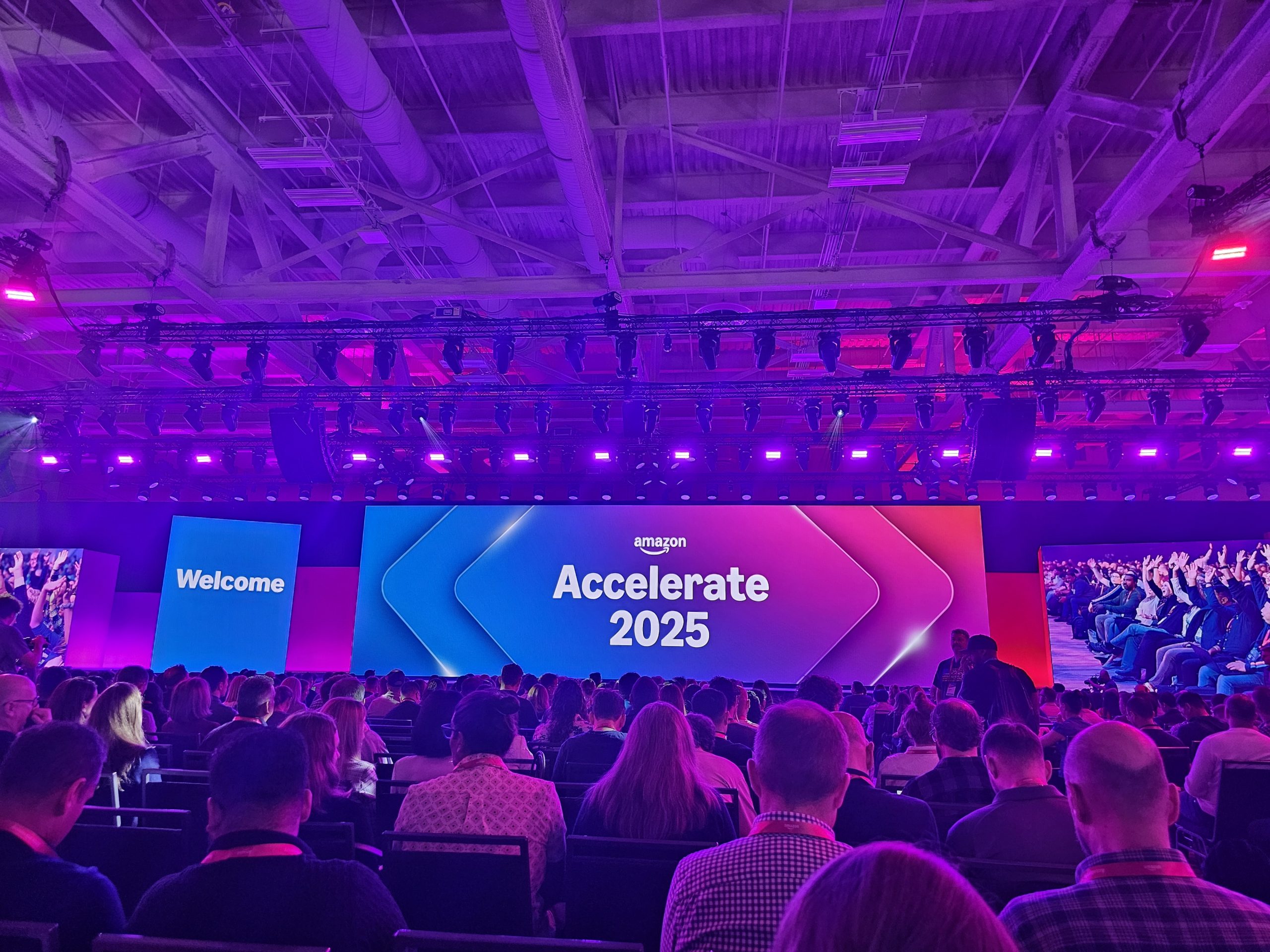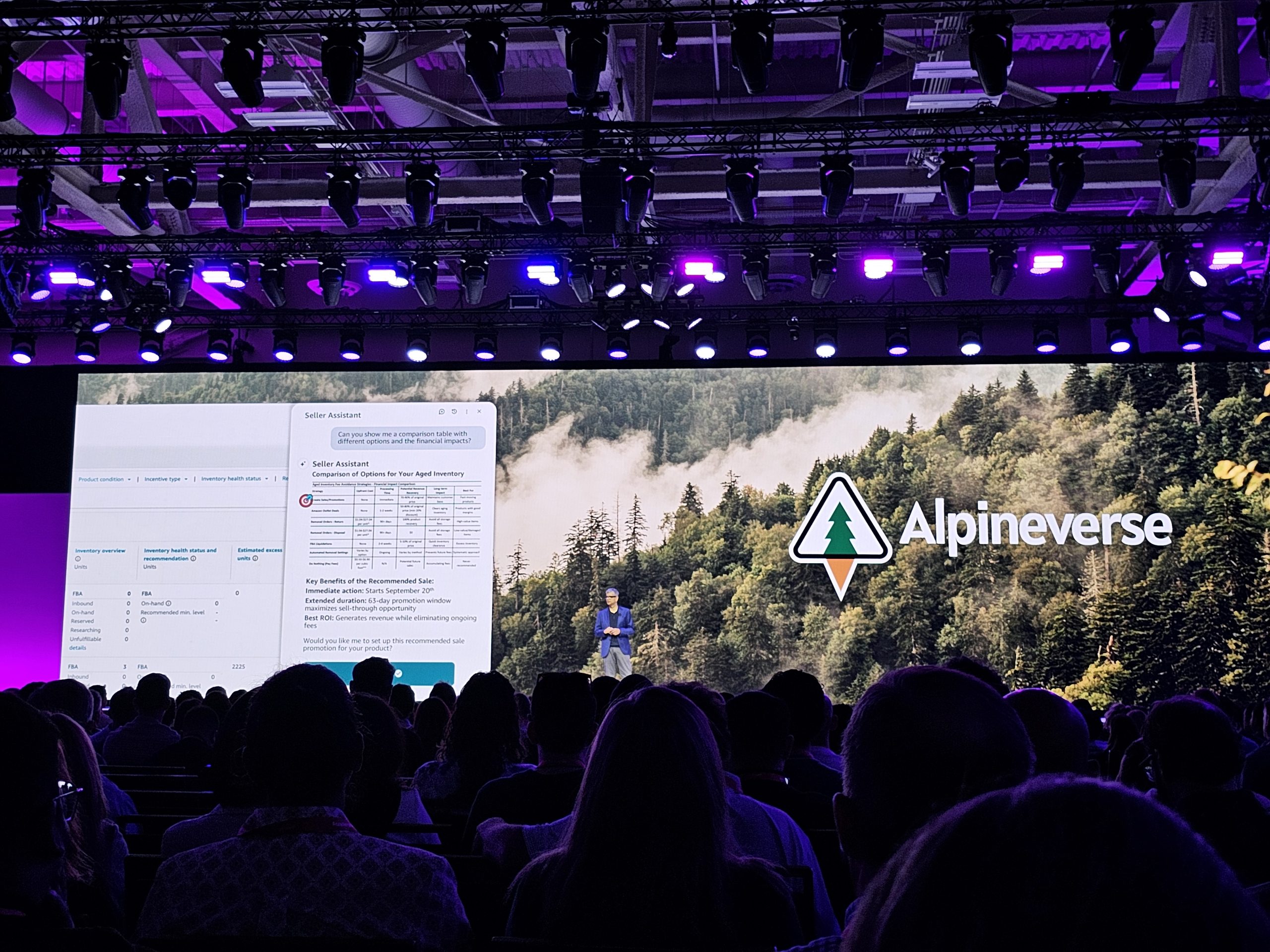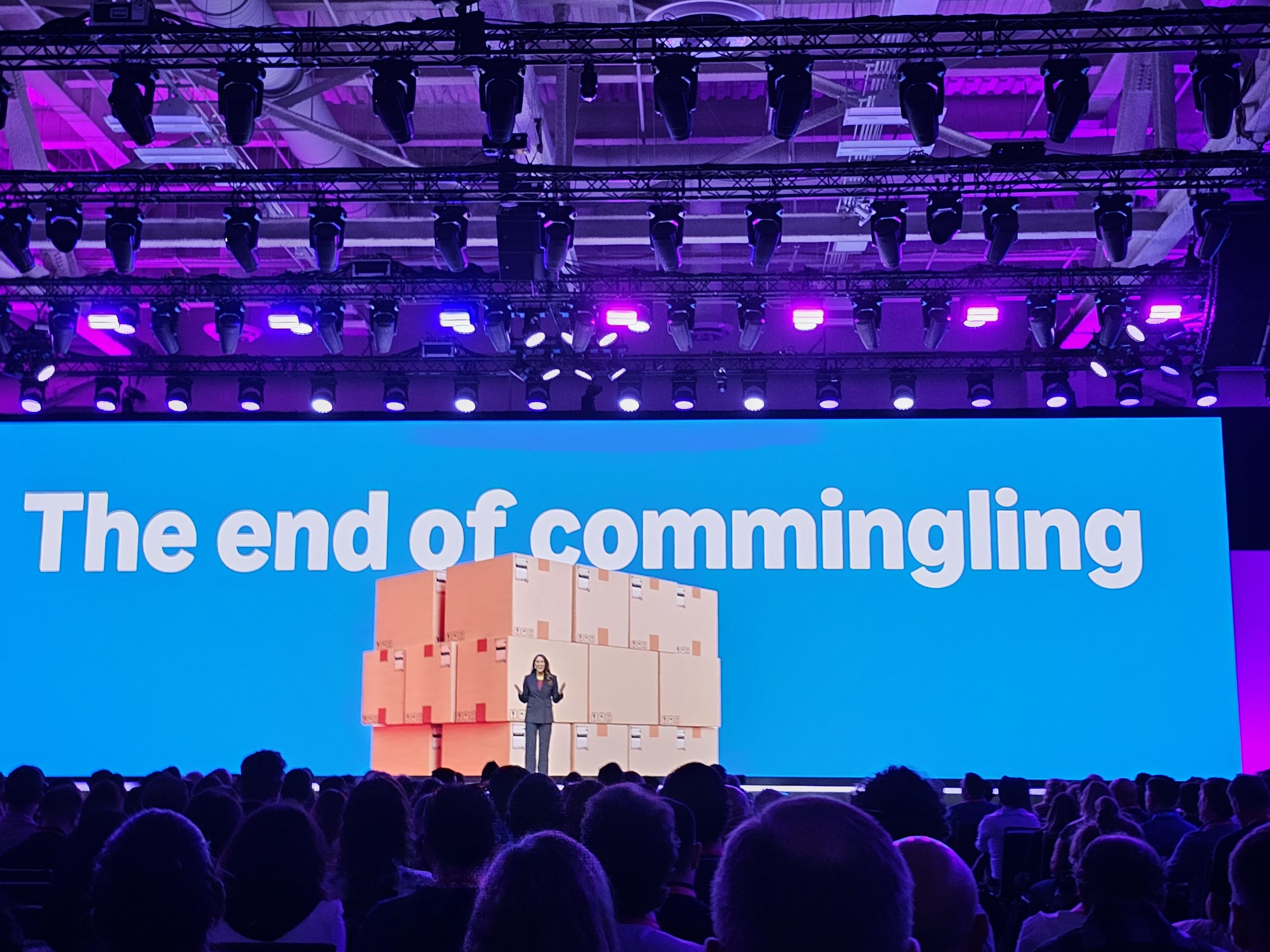Amazon Accelerate 2025: Recap of Amazon’s Flagship Event
Every September, Amazon takes the stage to tell its seller community how it plans to “make selling easier.” This year’s Accelerate conference in Seattle was no exception. From AI-powered assistants to global logistics, the message was clear: everything Amazon builds is for the benefit of sellers.
And yet, being the natural skeptic that I am, I found myself thinking more than once: prove it.
Here’s what stood out from Amazon’s flagship event, and what still feels “too good to be true.”
Update — October 2025
Amazon has announced new pricing for AWD, MCF, and Buy with Prime effective January 15, 2026, following the holiday peak period. Highlights: AWD West storage increases to $0.57 per cubic foot per month, AWD transportation rises to $1.40 per cubic foot (Managed $1.26), MCF per-unit fees increase by about $0.30 for most 1–2 unit orders, and Buy with Prime fulfillment increases by $0.24 per unit. For details and seller guidance, read our latest breakdown:
Amazon announces AWD, MCF, and Buy with Prime fee increases for 2026.
Day 0: Amazon Partner Summit (Sept 15, Seattle)
Amazon hosted partners for a pre-conference day focused on Buy with Prime, Multi-Channel Fulfillment, and agency support. Peter Larsen, VP of Buy with Prime and Multi-Channel Fulfillment, set the tone:
“It might be a little surprising to see all these channels on one screen next to Amazon… But the reality is the world is a big place, and omnichannel is essential for your business.”
That acknowledgment – that Amazon isn’t the only channel – is a major change in rhetoric, but let’s be clear: Amazon’s “omnichannel” strategy is designed to funnel your Walmart, Shopify, or even Shein orders through Amazon’s logistics. Sellers gain reach, but Amazon gains even more control.
Verdict: Proceed with caution before putting all of your eggs in the Amazon Supply Chain Services basket.
Day 1: Amazon Accelerate Kicks Off (Sept 16, Seattle)
Official sessions kicked off on Tuesday and spotlighted Seller Fulfilled Prime (SFP) and Amazon Global Logistics.
Jenny Kim, Principal PM for Fulfilled by Merchant, pitched SFP as a way to stay in control of inventory while keeping the Prime badge. Sounds great! The catch? Sellers must still hit Amazon’s strict on-time performance standards, which often requires outsourcing to carriers (or Amazon Freight). Independence in name, but not in practice.
Amazon Global Logistics (AGL) promised a streamlined, end-to-end cross-border pipeline. Yes, reducing landed costs is a win. But the fine print? You’re now shipping through Amazon’s freight network, customs brokerage, and warehousing. Convenience comes at the cost of dependency.
Verdict: Helpful tools, but every step pushes sellers deeper into Amazon’s orbit.
Day 2: Amazon’s Big AI Showcase (Sept 17, Seattle)
To the surprises of no one, Amazon once again made generative AI the star of the show. Dharmesh Mehta, VP of Worldwide Selling Partner Services, framed it as empowerment:
“We’re putting AI in the hands of every seller, so you can spend less time on tasks and more time growing your business.”
The AI Seller Assistant can auto-optimize listings, run multi-step tasks, and even take action on your behalf. The Creative Studio AI can spin up full ad campaigns, with early testers reporting as much as a 12% lift in sales.
It all sounds brilliant, but as a creative myself, I kept wondering: if Amazon’s AI is optimizing your listings, your ads, your video, your storefront… How different will your brand really look from your competitors’? And who benefits more from that uniformity – the seller, or Amazon?
Just a word of caution: if Amazon’s brand creative begins to overtake your brand creative, at what point does it stop becoming your brand and start becoming theirs?
Maybe you should hold on to some of those graphic designers after all.
The most applause of the day, however, came when executives promised to kill the dreaded “delete and relist” fix and error code 8541.
If Amazon really delivers on that one, it will save sellers untold hours and headaches. But until January 2026, I’m keeping that one in the “prove it” column.
Verdict: Amazon continues to push AI and automation, but ignores the fundamental flaw in believing AI-generated content can ever be truly unique.
Day 3: Big Visions, Big Dependencies (Sept 18, Seattle)
“What would it look like if your supply chain partner was just as invested in your success as you are?”
A great question, and one the team at Tactical Logistic Solutions has already put at the forefront of their positioning and customer value for over a decade.
Still, despite being late to the game, Amazon closed Accelerate with bold logistics promises:
- Global Warehousing & Distribution (GWD): Increased global warehouses will allow for 20–40% cheaper storage near manufacturing hubs.
- More Investment in Easy Ship: Investing in a larger fleet nationwide will result in ~30% faster delivery for seller-fulfilled orders.
- Multi-Channel Distribution (2026): Ship to retail stores using Amazon’s logistics backbone, allowing you to send inventory to and off-Amazon.
And of course, the pièce de résistance: Amazon will end commingling, finally stopping the practice of mixing inventory from different sellers. This is a genuine win for brand owners who have struggled with identifying counterfeit or expired goods, and is projected to save $600M in re-labeling and/or re-stickering costs.
For a complete list Accelerate supply chain updates, check out our post here.
Amazon Accelerate 2025 Final Takeaway: Trust, but Verify
Across all four days, the refrain was consistent: “we’re building these tools for you, our sellers.” And yes, some changes — ending commingling, fixing catalog errors, giving everyone access to AMC analytics — deserve celebration.
Still, the bigger theme is unavoidable: Amazon wants to be the backbone of your business, no matter where you sell. Marketplace, D2C, or Walmart, Amazon is positioning itself as your must-have (and must-rely-on) operating system.
AI saves time, but only if you trust Amazon to act in your best interest. Logistics becomes simpler, but only if you hand Amazon the keys to your supply chain.
So yes, the 2025 Accelerate conference showed Amazon at its most ambitious, with record investment across many areas of its ever-growing business. It also pushed sellers into closer into Amazon’s infrastructure.
Given that, and as we gear up for Q4 and the uncertainty of the global economic landscape in front of us, my advice would be to hold your applause for now and to say back to the powers that be: “Oh yeah? Prove it.”



